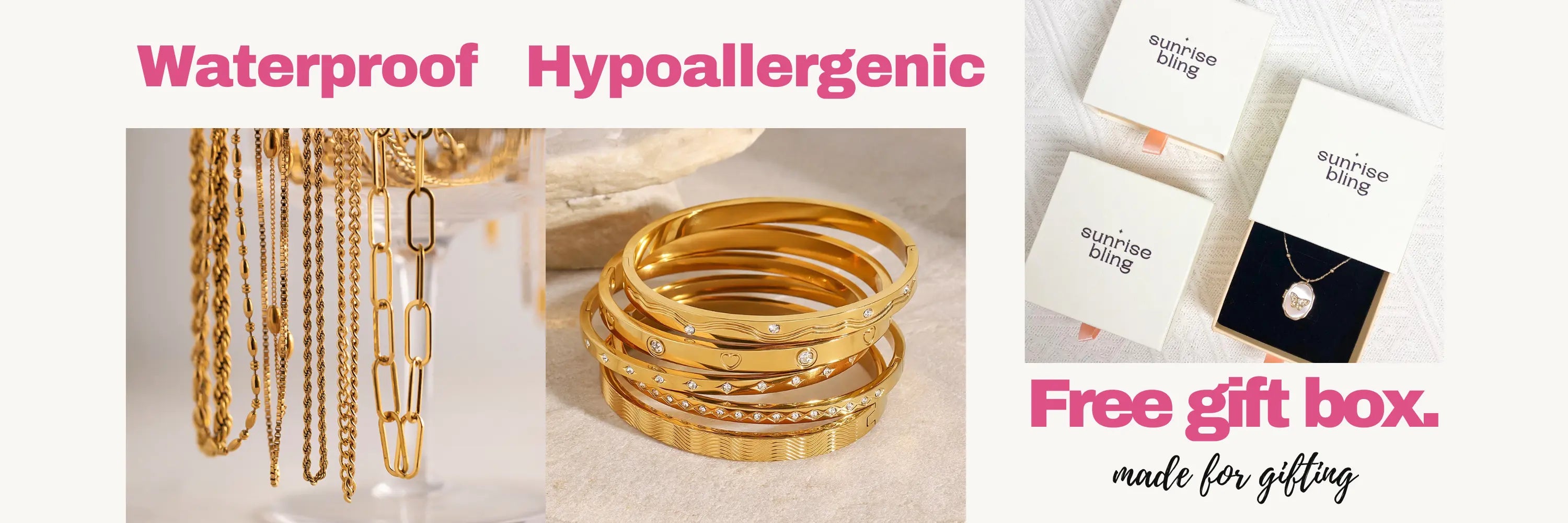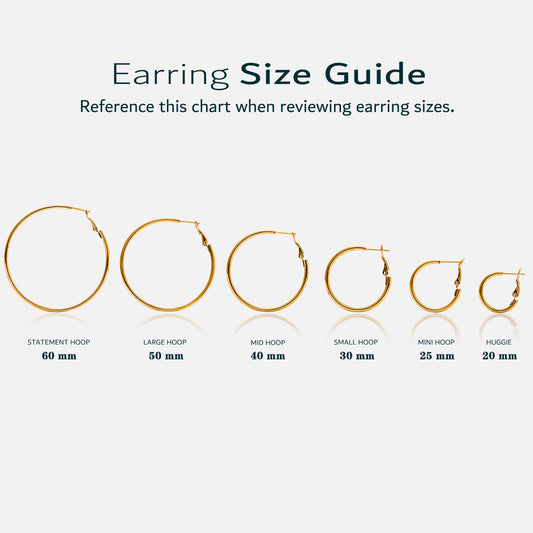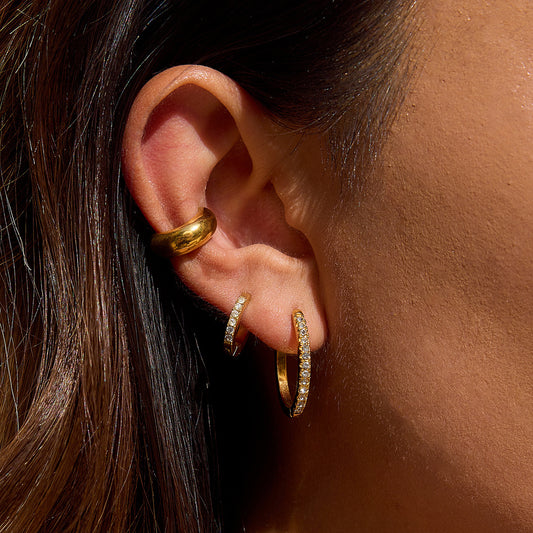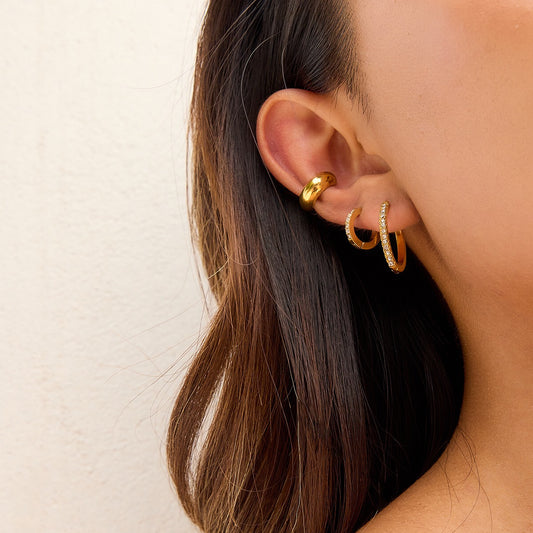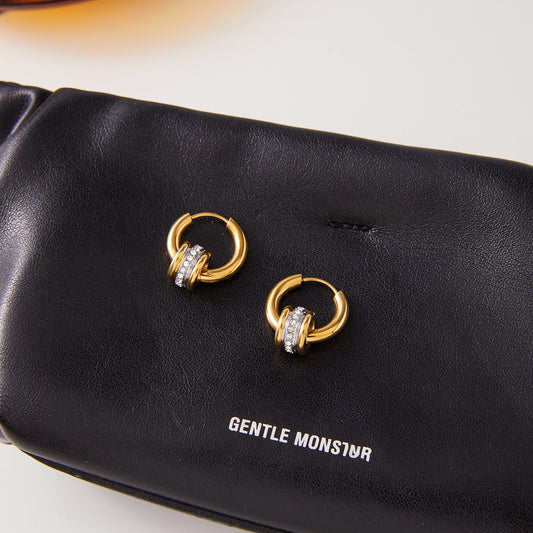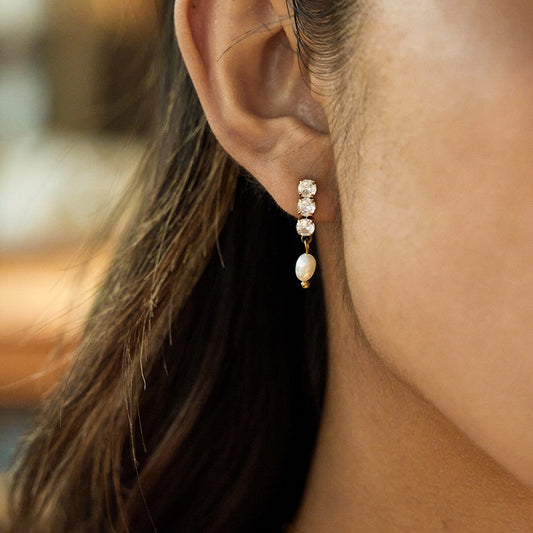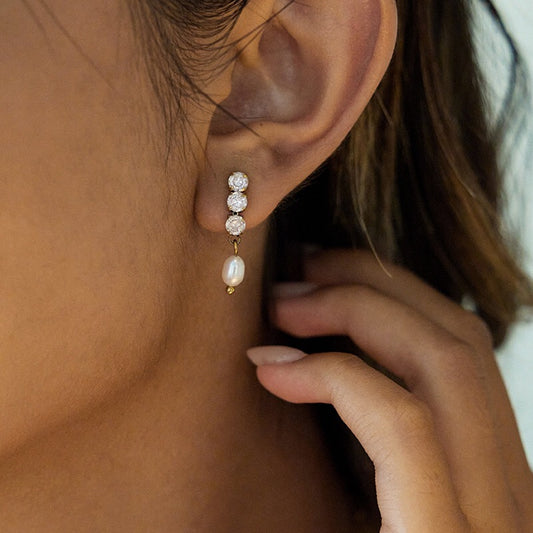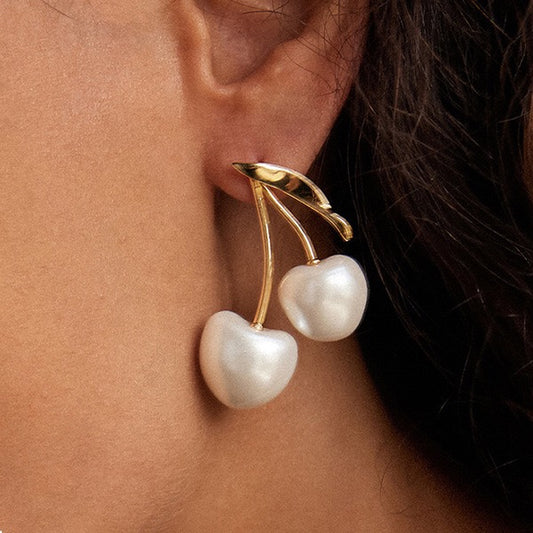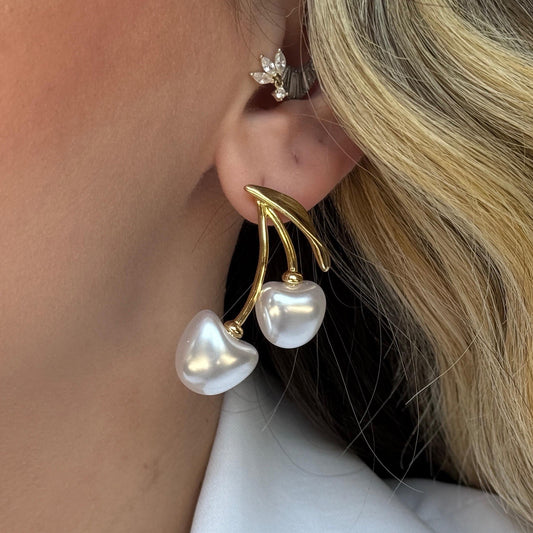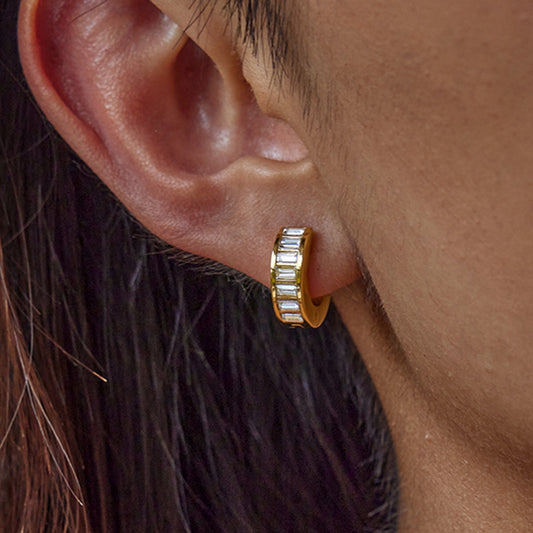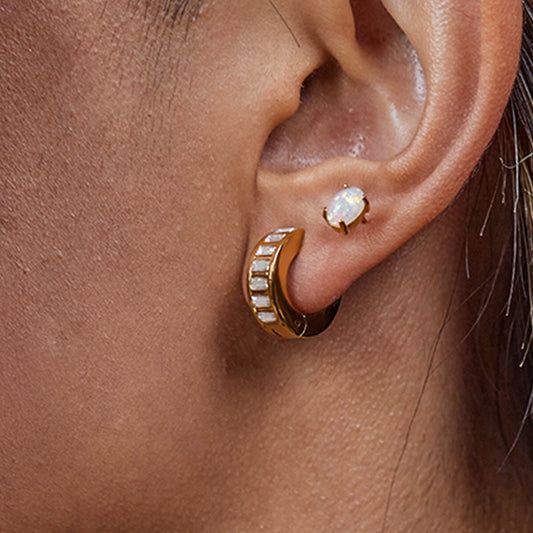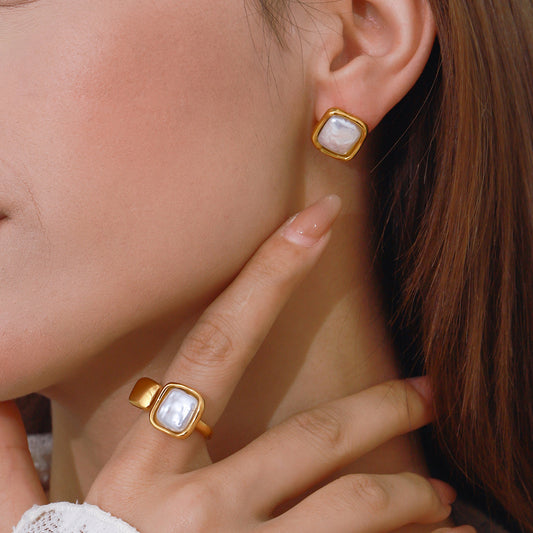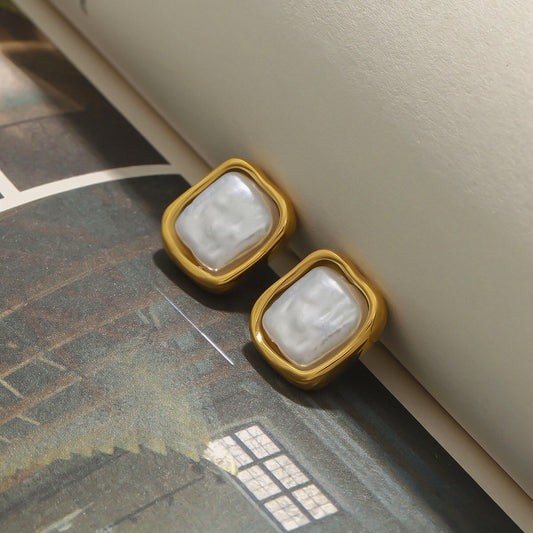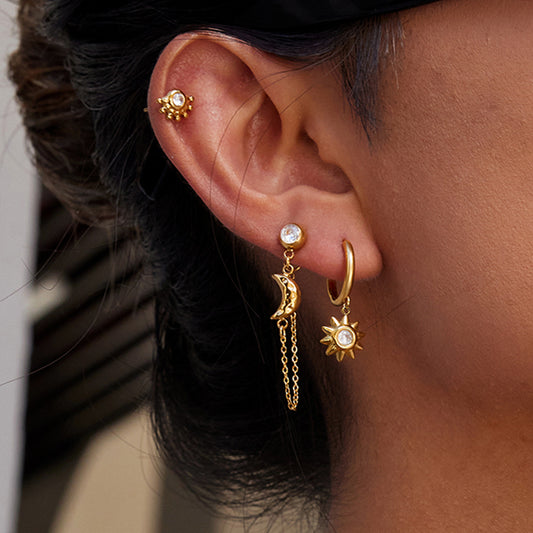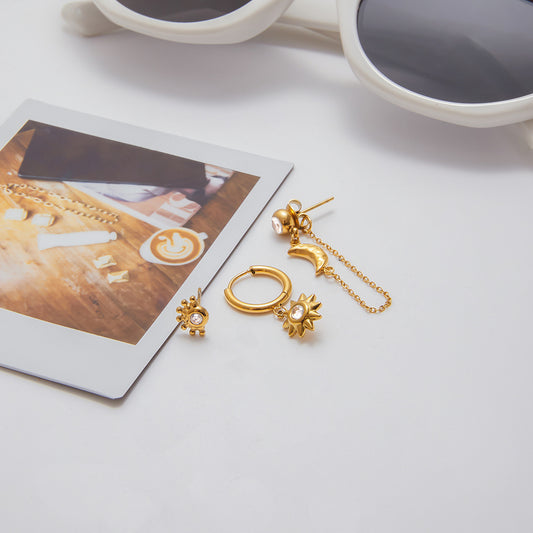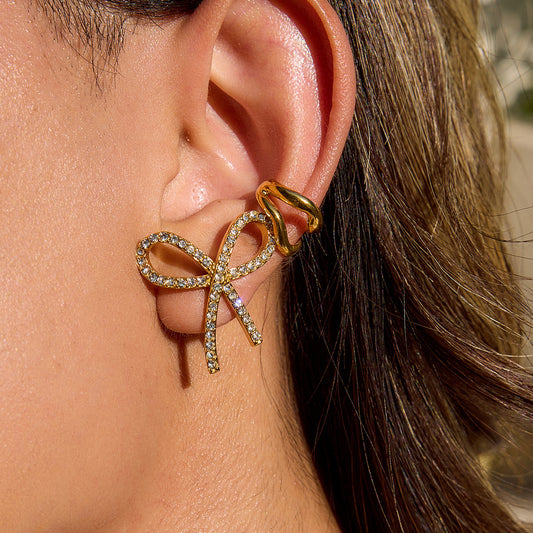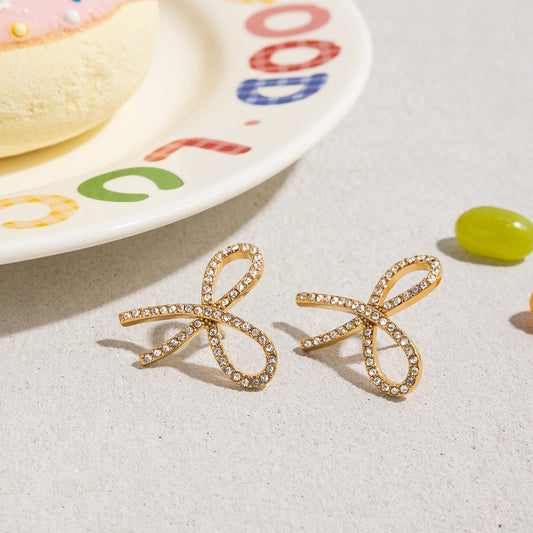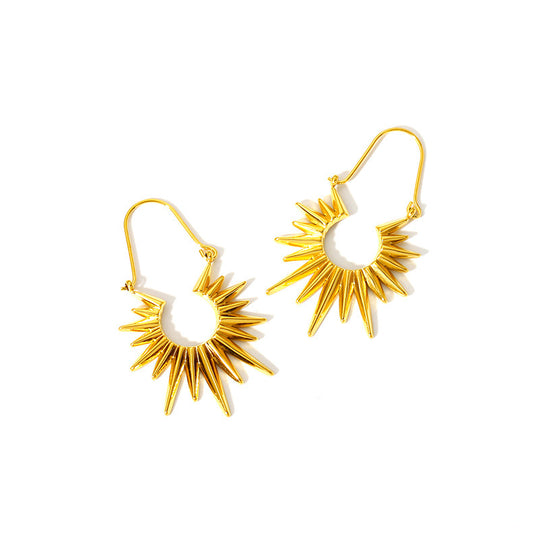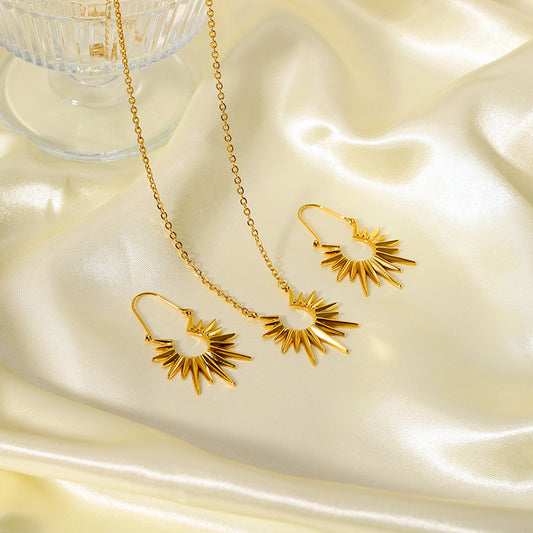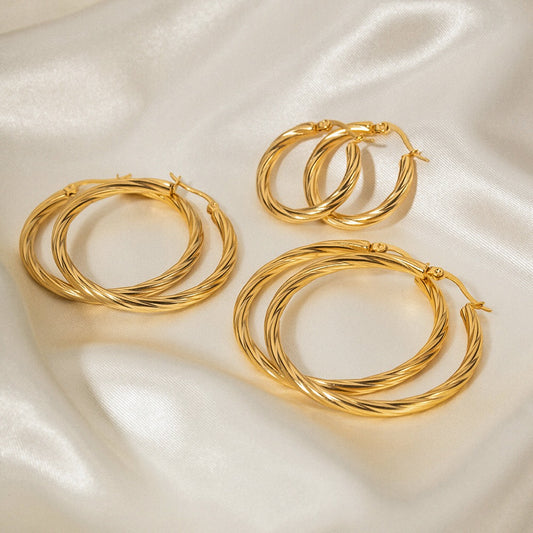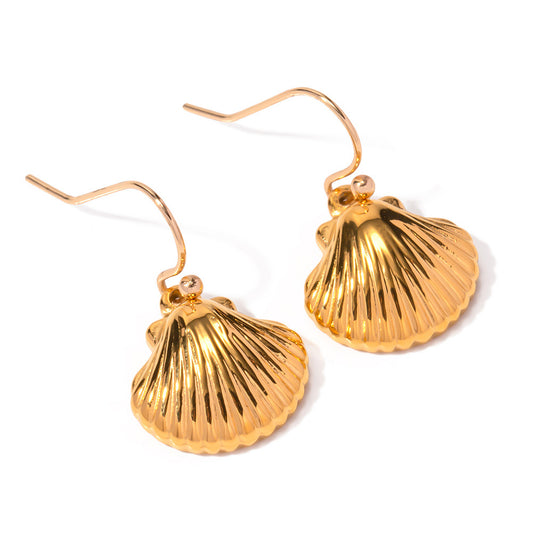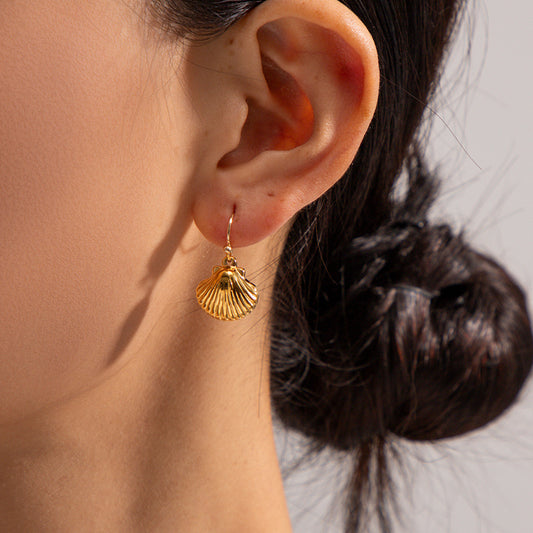A diamond earrings—whether tiny studs or glamorous drops—are the ultimate symbol of timeless elegance, capable of elevating any look from ordinary to extraordinary. The Diamond Jewelry Market was valued at USD 356.04 Billion in 2024, and is expected to reach USD 478.81 Billion by 2030, rising at a CAGR of 5.22%. What makes them such a staple? Unlike fleeting fashion accessories, a diamond earrings blend unmatched sparkle with versatility—they work for a morning work meeting, a casual brunch with friends, or a romantic anniversary dinner with your wife. From classic solitaire studs to modern halo drops, this guide covers everything you need to know about a diamond earrings, from their design to why they’re the perfect gift for your spouse.

What Is A Diamond Earrings?
A diamond earrings refers to any earring style that features diamonds (natural or lab-grown) as the central or accent gemstone, set in a durable metal base (like gold, silver, or platinum). Diamonds are unique among gemstones—they’re the hardest natural material (rated 10 on the Mohs scale) and known for their “brilliance” (light reflection) and “fire” (dispersion of colored light), which create their iconic sparkle. Unlike other gemstone earrings (e.g., sapphire or ruby), a diamond earrings has a universal appeal, fitting every personal style and occasion.
Key Characteristics of A Diamond Earrings
-
Diamond Types: The two main categories of diamonds used in earrings are:
-
Natural Diamonds: Mined from the earth, valued for their rarity and natural beauty. They’re graded by the 4Cs (Carat Weight, Clarity, Color, Cut) to determine quality and price.
-
Lab-Grown Diamonds: Created in a controlled lab environment, chemically identical to natural diamonds but 30–50% more affordable. They have the same sparkle and durability, making them a popular choice for budget-conscious shoppers.
-
Metal Bases: The setting metal impacts both style and durability:
-
White Gold (14k/18k): A popular choice for diamond earrings, as its cool tone enhances the diamond’s sparkle. It’s hypoallergenic and resistant to tarnish.
-
Yellow Gold (14k/18k): Adds warmth to diamonds, perfect for vintage-inspired or classic styles. It’s durable and pairs well with warm skin tones.
-
Platinum: A luxury metal that’s 30x rarer than gold. It’s hypoallergenic, scratch-resistant, and retains its white color forever—ideal for heirloom-quality earrings.
-
Sterling Silver: An affordable option for casual diamond earrings (e.g., small studs). It’s hypoallergenic for most people but may tarnish over time (easily polished with a silver cloth).
-
Setting Styles: How diamonds are attached to the metal affects both security and aesthetics:
-
Prong Setting: Small metal prongs (4–6) hold the diamond in place, maximizing light exposure for more sparkle. Common in solitaire studs.
-
Bezel Setting: The diamond is encased in a thin metal rim, protecting it from chips or damage. Ideal for active lifestyles or everyday wear.
-
Pavé Setting: Tiny diamonds are set closely together (held by tiny prongs) to create a “line of sparkle.” Used in halo or drop earrings for extra glamour.
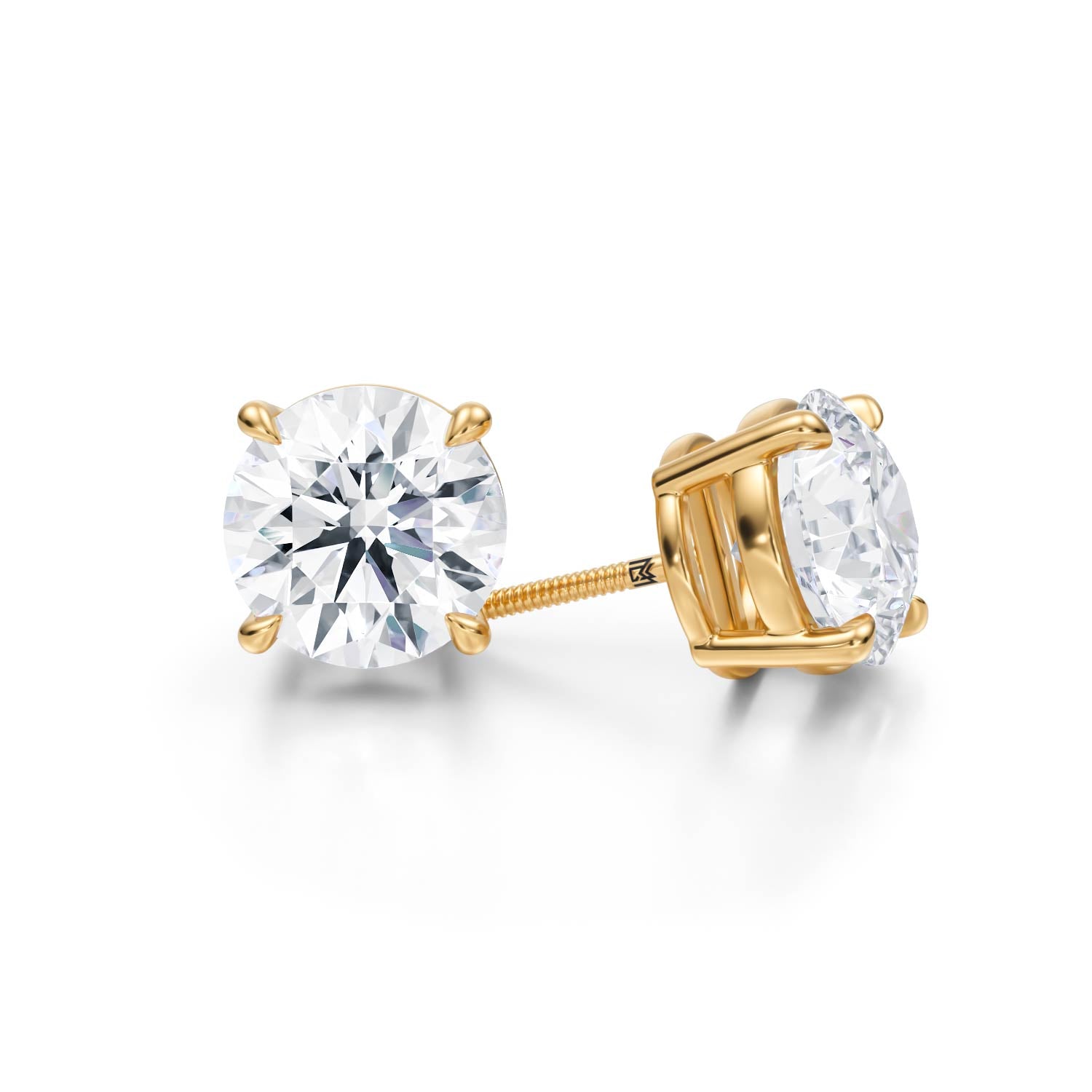
How A Diamond Earrings Differs from Other Earrings
-
Sparkle & Durability: No other gemstone matches a diamond’s brilliance or hardness—sapphires and rubies are softer (rated 9 on the Mohs scale) and have less fire. A diamond earrings won’t scratch or lose sparkle with daily wear.
-
Timelessness: Trendy gemstone earrings (e.g., emerald or tanzanite) may feel dated in a few years, but a diamond earrings never goes out of style. It’s been a luxury staple for decades, worn by royalty, celebrities, and everyday people.
-
Value Retention: Diamonds hold their value better than most gemstones. A well-cared-for diamond earrings will retain 50–70% of its original value over 10 years, making it a small investment.
Why Is A Diamond Earrings So Popular?
A diamond earrings’ enduring popularity stems from its ability to meet modern shoppers’ needs: it’s luxurious yet practical, versatile yet meaningful. Its appeal boils down to four key factors:

Timeless Elegance That Transcends Trends
Fashion fads come and go, but a diamond earrings remains relevant. Whether paired with a 1950s cocktail dress or a 2020s oversized sweater, it adds a touch of sophistication that never feels outdated. Celebrities like Audrey Hepburn (who famously wore diamond studs) and Meghan Markle (often seen in minimalist diamond earrings) have kept this style iconic, proving its ability to adapt to any era.
Versatility for Every Occasion
A diamond earrings works in nearly every setting, making it a “one-and-done” accessory:
-
Casual Wear: Tiny diamond studs (0.10–0.25 carats) pair with jeans, a t-shirt, and sneakers—adding “quiet luxury” without overdoing it.
-
Work Wear: Medium solitaire earrings (0.25–0.50 carats) complement a blazer and button-down—polished enough for meetings, but not distracting.
-
Formal Events: Large diamond drops or halo earrings (0.50+ carats) elevate a gown or cocktail dress—no need for extra jewelry.
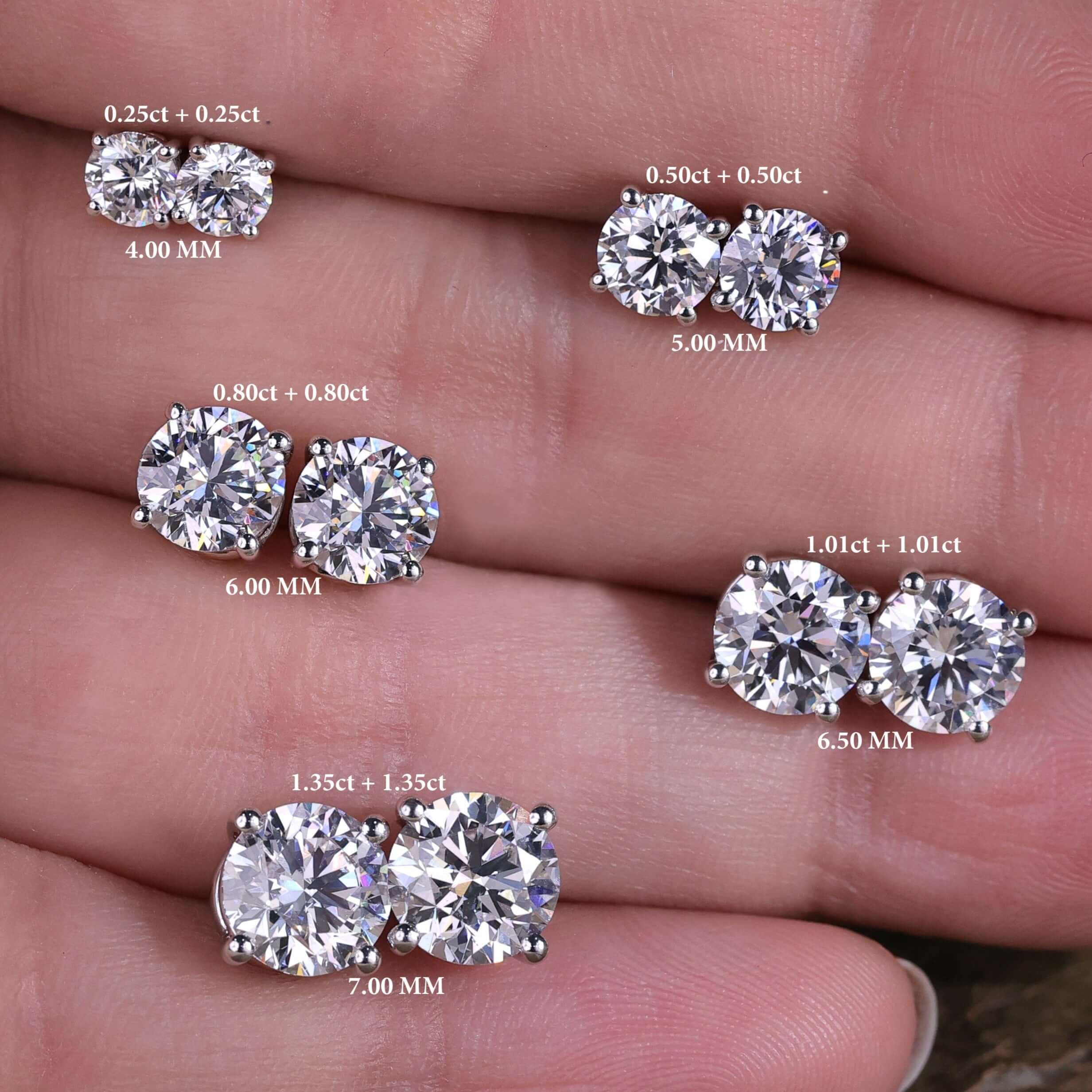
Emotional Resonance (Perfect for Milestones)
Diamonds are tied to meaningful moments: they’re the traditional gift for 10th wedding anniversaries (diamond anniversary), birthdays, and career milestones. A diamond earrings isn’t just an accessory—it’s a tangible reminder of love, achievement, or celebration. Many people pass down diamond earrings as heirlooms, adding even more sentimental value.
Accessibility for Every Budget
Gone are the days when a diamond earrings was only for the wealthy. Lab-grown diamonds and small-carat styles mean there’s an option for nearly every budget:
-
Budget-Friendly: Lab-grown diamond studs in sterling silver cost \(200–\)500.
-
Mid-Range: Natural diamond studs in 14k gold cost \(500–\)2,000.
-
Luxury: Large natural diamond drops in platinum cost $2,000+.
Popular Styles of A Diamond Earrings
A diamond earrings comes in a range of designs, from minimalist to bold, ensuring there’s a pair for every taste. Below are the most in-demand styles:
Classic Solitaire Diamond Earrings (Everyday Wear)
The iconic “solitaire” style—one diamond per earring—perfect for anyone who loves understated elegance:
-
Solitaire Studs: A single diamond (0.10–1.00 carats) set in a prong or bezel setting. The most popular style, worn by everyone from busy moms to business professionals. Choose 14k white gold for a modern look or yellow gold for vintage charm.
-
Solitaire Drops: A small diamond (0.25–0.50 carats) attached to a thin metal chain (1–1.5 inches long). They add subtle movement without being bulky—great for transitioning from day to night.
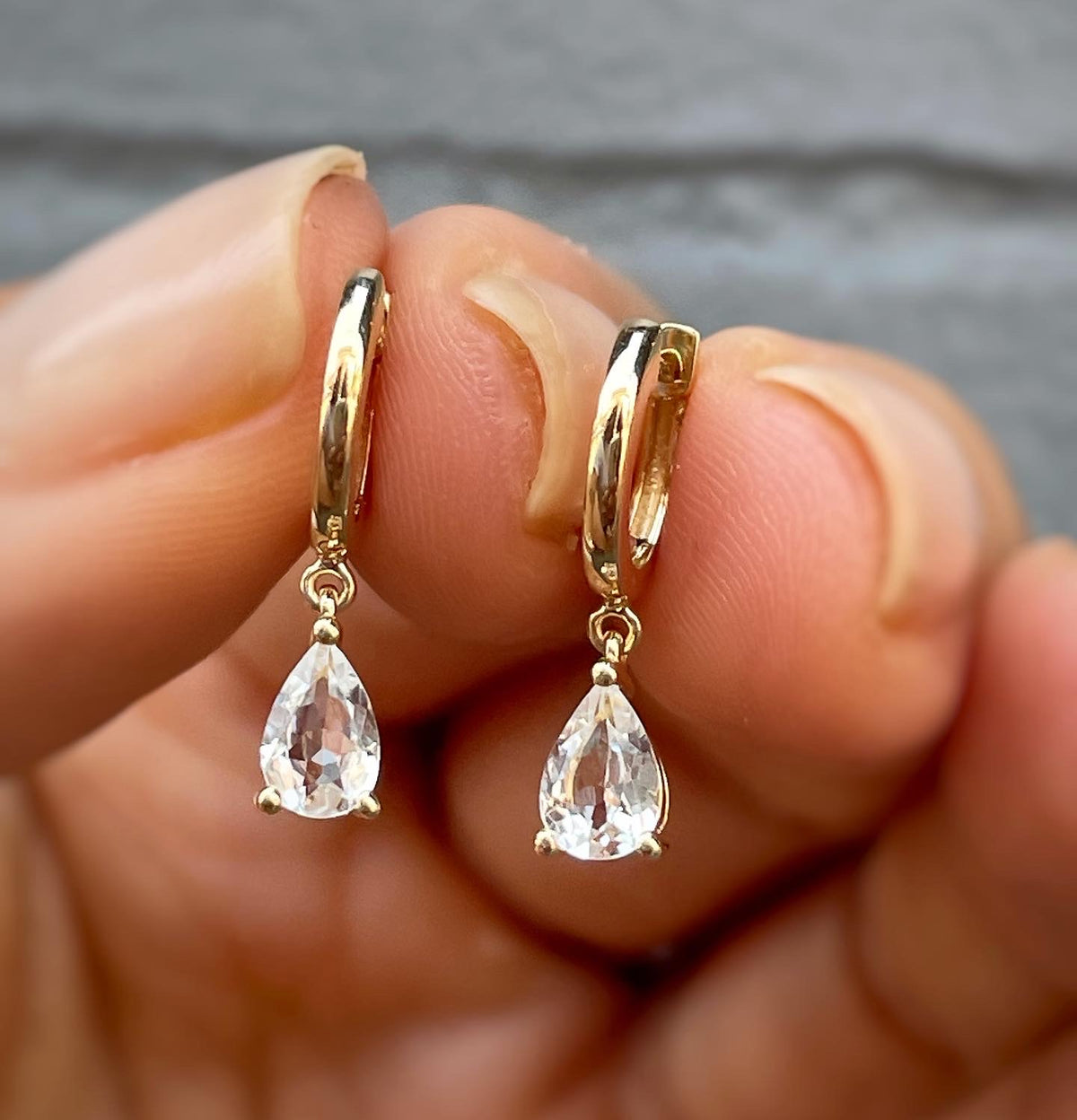
Halo Diamond Earrings (Glamorous & Eye-Catching)
These styles feature a central diamond surrounded by a “halo” of tiny diamonds, amplifying sparkle and visual size:
-
Halo Studs: A 0.30–0.50 carat central diamond with a halo of 0.10–0.20 carats total weight. The halo makes the central diamond look larger and adds extra shine—perfect for special occasions.
-
Halo Drops: A halo stud attached to a short metal drop (0.5–1 inch). They’re glamorous but not overly dramatic, ideal for weddings or anniversary dinners.
Modern Diamond Hoop Earrings (Trendy & Versatile)
A hybrid of classic hoops and diamond sparkle, these earrings blend trendiness with timelessness:
-
Diamond Pavé Hoops: Small hoops (1–1.5 inches) with pavé-set diamonds along the entire circumference. They’re lightweight and flexible, great for everyday wear or nights out.
-
Diamond Accent Hoops: Hoops with a single diamond (0.10–0.20 carats) set at the front. They add a subtle touch of sparkle—perfect for those who prefer minimalist hoops with a twist.
Vintage-Inspired Diamond Earrings (Nostalgic Charm)
These styles draw inspiration from past decades, blending retro flair with modern wearability:
-
Art Deco Diamond Earrings: Geometric shapes (e.g., squares, triangles) with diamonds set in 14k yellow gold. They’re elegant and unique—great for anyone who loves 1920s glamour.
-
Pear-Shaped Diamond Drops: A pear-cut diamond (0.50–1.00 carats) attached to a gold chain. Popular in the 1950s, this style adds old-world charm to any outfit.
How to Wear A Diamond Earrings
Wearing a diamond earrings is easy—its sparkle complements nearly any outfit. Follow these tips to make the most of its elegance:
Styling for Casual Looks
-
Tiny Studs + Basics: Pair 0.10–0.25 carat diamond studs with a white t-shirt, high-waisted jeans, and ankle boots. Add a denim jacket and a delicate gold necklace for a “put-together casual” vibe.
-
Pavé Hoops + Loungewear: Dress up a cozy oversized sweater and leggings with small diamond pavé hoops. Add fuzzy slippers or sneakers for an “elevated loungewear” look—perfect for coffee runs or casual meetups.
-
Solitaire Drops + Layered Necklaces: Wear 0.25 carat solitaire drops with a layered necklace set (a choker + a longer pendant). The earrings and necklaces complement each other without clashing.
Styling for Work Wear
-
Solitaire Studs + Professional Attire: 0.25–0.50 carat diamond studs work with blazers, button-downs, and pencil skirts. They’re subtle enough for meetings but add a touch of luxury to a plain outfit. Avoid large drops or hoops at work—they can be distracting.
-
Bezel-Set Studs + Business Casual: For a relaxed office environment, wear bezel-set diamond studs with a knit sweater, wide-leg pants, and loafers. The bezel setting is durable, making them ideal for busy workdays.
-
Match Metals to Your Watch: If you wear a silver watch, opt for white gold or sterling silver diamond earrings. If you wear a gold watch, choose yellow or rose gold—this creates a cohesive look.
Styling for Formal Occasions
-
Halo Drops + Gowns: Pair halo diamond drops with a floor-length gown in a neutral color (black, white, champagne). Keep other jewelry minimal—just a thin gold bracelet or a small diamond pendant. The earrings will be the focal point, adding glamour without overdoing it.
-
Pear-Shaped Diamonds + Cocktail Dresses: Wear pear-shaped diamond drops with a knee-length cocktail dress and strappy heels. Add a small clutch with gold hardware to complement the earrings—vintage charm at its finest.
-
Matte Metal + Bold Outfits: If your dress has a bright color or bold pattern, choose diamond earrings set in matte gold or platinum. The matte finish softens the look, preventing the earrings from clashing with your outfit.
A Diamond Earrings: Perfect Gift for Your Wife
A diamond earrings is one of the most thoughtful gifts you can give your wife. It’s elegant, personal, and tied to meaning—making it far more special than a generic gift.
Why It Resonates as a Wife Gift
-
Timelessness: Unlike flowers or perfume (which fade), a diamond earrings lasts for years. She’ll wear it to anniversaries, family gatherings, and even pass it down to your children—turning it into a family heirloom.
-
Personalization: You can choose a style that fits her taste: solitaire studs if she loves minimalism, halo drops if she enjoys glamour, or vintage-inspired earrings if she’s into retro fashion.
-
Symbolism: Diamonds represent love, strength, and eternity—perfect for honoring your marriage. Gifting a diamond earrings says, “I cherish our time together, and I look forward to a lifetime more.”
Top A Diamond Earrings Gifts for Your Wife
-
14k White Gold Solitaire Studs: A classic choice—0.50 carat natural or lab-grown diamonds in a prong setting. They’re versatile, durable, and match everything she owns.
-
Halo Drop Earrings: 0.30 carat central diamonds with a halo of tiny diamonds, set in 14k rose gold. They’re glamorous enough for anniversaries but subtle enough for occasional everyday wear.
-
Vintage Art Deco Diamond Earrings: Geometric-shaped diamonds in 14k yellow gold. Ideal if she loves unique, one-of-a-kind pieces—great for milestone anniversaries (like 10th or 25th).
Tips for Choosing the Right One
-
Know Her Style: If she wears mostly casual clothes, opt for small studs or pavé hoops. If she loves formal events, halo drops or vintage earrings are better.
-
Check Her Metal Preference: Does she wear white gold, yellow gold, or rose gold? Stick to what she already loves—most diamond earrings come in all three options.
-
Consider the Occasion: For a 10th wedding anniversary (diamond anniversary), solitaire studs or halo earrings are perfect. For a birthday, a smaller, more playful style (like pavé hoops) feels fitting.
How to Clean A Diamond Earrings
Diamonds are durable, but they need regular cleaning to maintain their sparkle—everyday dirt, lotion, and oil can make them look dull. The good news is cleaning a diamond earrings is easy to do at home.
Daily Care to Prevent Dullness
-
Wipe After Wear: After wearing the earrings, use a soft, dry microfiber cloth to wipe each diamond and metal setting. This removes skin oils and lotion that can build up on the surface.
-
Store Properly: Keep the earrings in a soft jewelry pouch or a jewelry box with a padded compartment. Avoid storing them with other jewelry (like metal chains or gemstones) that can scratch the metal or diamond.
-
Remove Before Activities: Take off the earrings before showering, swimming, cooking (especially with greasy foods), or applying makeup/hairspray. Water and chemicals can dull diamonds and tarnish metal.
Step-by-Step Cleaning Process
-
Mix a Mild Solution: In a small bowl, combine 1 cup warm water with 1 drop of mild dish soap (like Dawn—avoid bleach or ammonia).
-
Soak the Earrings: Let the earrings soak for 10–15 minutes. This loosens dirt and oil from the diamond settings (especially pavé or prong settings, where grime hides).
-
Scrub Gently: Use a soft-bristled toothbrush (or a small jewelry brush) to scrub the earrings—focus on the diamond’s back (where oil builds up) and the setting’s crevices. Be gentle around prongs—too much pressure can bend them.
-
Rinse and Dry: Rinse the earrings under warm water to remove soap residue, then pat them dry immediately with a microfiber cloth. For extra sparkle, buff the metal setting gently with the cloth.
What to Avoid When Cleaning
-
Abrasive Cleaners: Skip toothpaste, baking soda, or scouring pads—they scratch metal and dull diamond surfaces.
-
Ultrasonic Cleaners: These machines are safe for most diamond earrings but can damage bezel settings or vintage styles (they may loosen prongs). Stick to hand cleaning for delicate designs.
-
Extreme Temperatures: Don’t expose the earrings to hot water or direct sunlight—this can discolor metal (especially sterling silver) or damage the setting.
How Much Is A Diamond Earring?
A diamond earring’s price depends on three key factors: diamond quality (4Cs), metal type, and brand. Prices range from affordable to luxury, making it easy to find one that fits your budget.
Budget-Friendly A Diamond Earring (\(200–\)1,000)
-
Lab-Grown Diamond Studs: 0.10–0.25 carat lab-grown diamonds in sterling silver or 10k gold. Cost: \(200–\)500.
-
Small Natural Diamond Studs: 0.10–0.20 carat natural diamonds (SI2 clarity, I-J color) in 10k gold. Cost: \(500–\)1,000.
Mid-Range A Diamond Earring (\(1,000–\)5,000)
-
Lab-Grown Diamond Hoops/Drops: 0.30–0.50 carat total weight lab-grown diamonds in 14k gold. Cost: \(1,000–\)2,500.
-
Natural Diamond Studs/Halo Earrings: 0.25–0.50 carat natural diamonds (VS2 clarity, G-H color) in 14k gold. Cost: \(2,500–\)5,000.
Luxury A Diamond Earring ($5,000+)
-
Natural Diamond Drops/Hoops: 0.50–1.00 carat total weight natural diamonds (VVS2 clarity, D-E color) in 18k gold or platinum. Cost: \(5,000–\)15,000.
-
Designer Diamond Earrings: Pieces from luxury brands like Tiffany & Co., Cartier, or Harry Winston—often featuring unique cuts (e.g., emerald or cushion) or diamond accents. Cost: \(15,000–\)100,000+.
Note: Sales events (Black Friday, Valentine’s Day) typically offer 10–25% off mid-range diamond earrings. Lab-grown options are also a budget-friendly alternative—you get the same visual size and sparkle as natural diamonds for 30–50% less. Many jewelers also offer financing plans (0% APR for 6–12 months) for luxury pieces, making them more accessible.
How Can You Tell If A Diamond Earring Is Real?
With fake diamond earrings (using cubic zirconia, moissanite, or glass) on the market, verifying authenticity is key—especially if you’re buying pre-owned or from a non-authorized retailer. Below are simple at-home tests and professional checks to ensure your diamond earrings are real:
At-Home Tests (Quick & Accessible)
-
The Fog Test: Hold one earring up to your mouth and breathe on the diamond (like fogging a mirror). Real diamonds conduct heat quickly—fog will disappear within 2–3 seconds. Fake diamonds (e.g., cubic zirconia) retain fog for 5+ seconds, as they’re not thermally conductive.
-
The Water Test: Fill a glass with water and gently place the diamond (if the earring is 可拆卸) or the entire earring (if secured) into the water. Real diamonds are dense (3.52 g/cm³) and will sink to the bottom. Fake diamonds are less dense—cubic zirconia sinks slowly, while glass may float.
-
The Sparkle Test: Examine the diamond under natural light. Real diamonds reflect white light (brilliance) and display small flashes of colored light (fire—hues of red, blue, green). Fake diamonds often have a “dull” sparkle or show excessive colored light (no white brilliance), as they don’t refract light the same way.
Professional Checks (More Reliable)
-
Check for a Certificate of Authenticity (COA): Reputable jewelers provide a COA for real diamond earrings, detailing the diamond’s 4Cs (carat weight, clarity, color, cut) and a unique serial number. Verify the COA with the issuing lab (e.g., GIA, AGS) online—fake COAs often have misspellings, blurry logos, or invalid serial numbers.
-
Inspect the Metal Hallmark: Real diamond earrings have a metal hallmark engraved on the post or setting, indicating purity (e.g., “14k” for 14k gold, “PT950” for platinum, “925” for sterling silver). Fake earrings may have no hallmark, or a hallmark that rubs off easily (test with a soft cloth—real hallmarks won’t fade).
-
Use a Diamond Tester: A handheld diamond tester (available at jewelry stores or online for \(50–\)100) measures thermal or electrical conductivity to distinguish real diamonds from fakes. Most jewelers offer free testing—simply bring the earrings to a local fine jewelry store for verification.
Red Flags for Fake Diamond Earrings
-
Unrealistically Low Prices: A real 0.50 carat diamond stud in 14k gold costs at least \(2,500. If a “diamond earring” is selling for \)200–$500, it’s almost certainly fake (likely cubic zirconia or moissanite).
-
Vague Descriptions: Retailers selling fakes avoid terms like “natural diamond” or “certified diamond.” Instead, they use vague phrases like “diamond-like,” “crystal,” or “simulated diamond.”
-
Poor Craftsmanship: Fake earrings often have uneven settings (gaps between the “diamond” and metal), rough edges on the post, or clasps that feel flimsy. Real diamond earrings have precise, smooth craftsmanship—no visible flaws.
Frequently Asked Questions About A Diamond Earrings
Q: Are lab-grown diamond earrings considered “real”?
A: Yes! Lab-grown diamonds are chemically, physically, and optically identical to natural diamonds—they’re just created in a lab instead of mined. They have the same hardness (10 on the Mohs scale), sparkle, and durability as natural diamonds. The only difference is their origin—and lab-grown options are more affordable and sustainable. Most jewelers now label lab-grown diamonds clearly, and they come with the same COAs as natural diamonds.
Q: Can I wear diamond earrings every day?
A: Absolutely—diamonds are the hardest natural material, so they’re durable enough for daily wear. Just follow these guidelines:
-
Choose the Right Setting: Bezel-set earrings are more scratch-resistant than prong-set (ideal for active lifestyles like working out or cooking).
-
Avoid Harsh Chemicals: Remove earrings before applying lotion, hairspray, or cleaning products—chemicals can dull the diamond’s sparkle or damage the metal setting.
-
Clean Regularly: Wipe earrings with a microfiber cloth after wear to remove skin oils—this keeps them shiny and prevents buildup.
Q: Do diamond earrings require resizing?
A: No—unlike rings, diamond earrings don’t need resizing. Most earrings come with standard post lengths (10–12mm) that fit most earlobes. For comfort, opt for earrings with secure backings (e.g., screw-backs for studs, lever-backs for drops)—they stay in place without pinching. If you have very thick or thin earlobes, look for earrings with adjustable backings (e.g., silicone stoppers that slide along the post).
Q: How long do diamond earrings last?
A: With proper care, diamond earrings can last a lifetime—even 50+ years! Diamonds don’t wear down or lose their sparkle, and metals like 14k gold or platinum resist tarnish and scratches. The only maintenance needed is occasional cleaning and, if necessary, prong tightening (to secure loose diamonds). Many families pass down diamond earrings as heirlooms, making them a lasting investment.
Q: Is it safe to buy diamond earrings online?
A: Yes—if you shop from reputable retailers. Follow these tips for safe online shopping:
-
Buy from Authorized Jewelers: Stick to brands like Blue Nile, James Allen, or Mejuri, or department stores like Nordstrom (they sell authentic, certified diamonds).
-
Check Return Policies: Look for 30–60 day return windows (with free shipping) in case the earrings don’t match your expectations.
-
Review Photos & Videos: Choose retailers that provide high-resolution photos or videos of the actual earrings (not stock images)—this lets you inspect the diamond’s sparkle and setting quality.
Conclusion: A Diamond Earrings—Elegance That Shines for a Lifetime
A diamond earrings isn’t just an accessory—it’s a symbol of timeless elegance, lasting love, and everyday luxury. Whether you’re wearing tiny solitaire studs to a work meeting, halo drops to a wedding, or vintage-inspired hoops to a casual brunch, it adds a touch of sparkle that elevates every moment. With lab-grown options making diamonds more accessible than ever, and designs ranging from minimalist to bold, there’s a diamond earring for every style and budget.
Now that you know how to choose, style, clean, and verify a diamond earring, it’s time to find your perfect pair. Browse our curated collection of diamond earrings—from budget-friendly lab-grown studs to luxury natural diamond drops—and use code DIAMOND15 to get 15% off your first order. Whether you’re treating yourself to a staple piece or gifting a pair to your wife for your 10th anniversary, a diamond earring is more than jewelry—it’s a way to wear elegance that shines, today and for years to come. Shop now and embrace the timeless sparkle of a diamond earring you’ll cherish forever.


